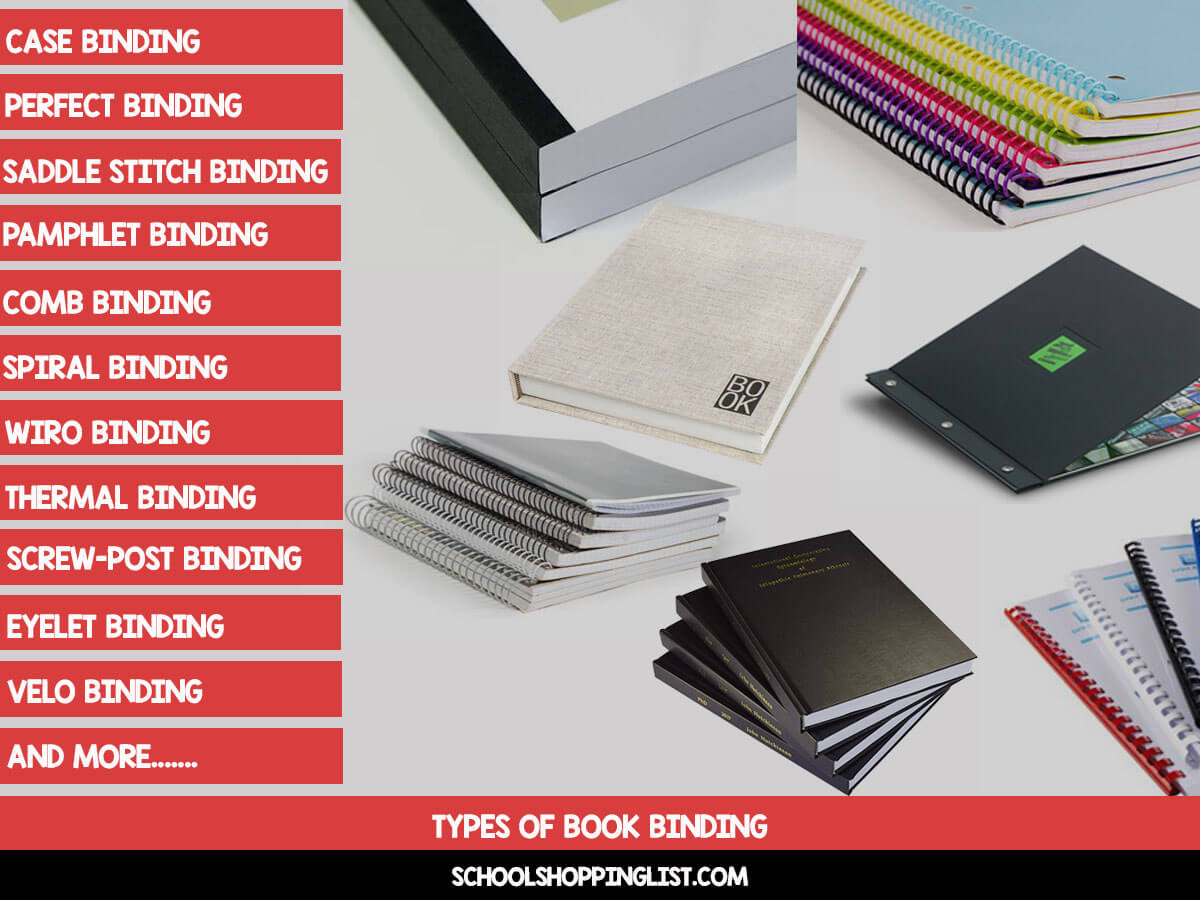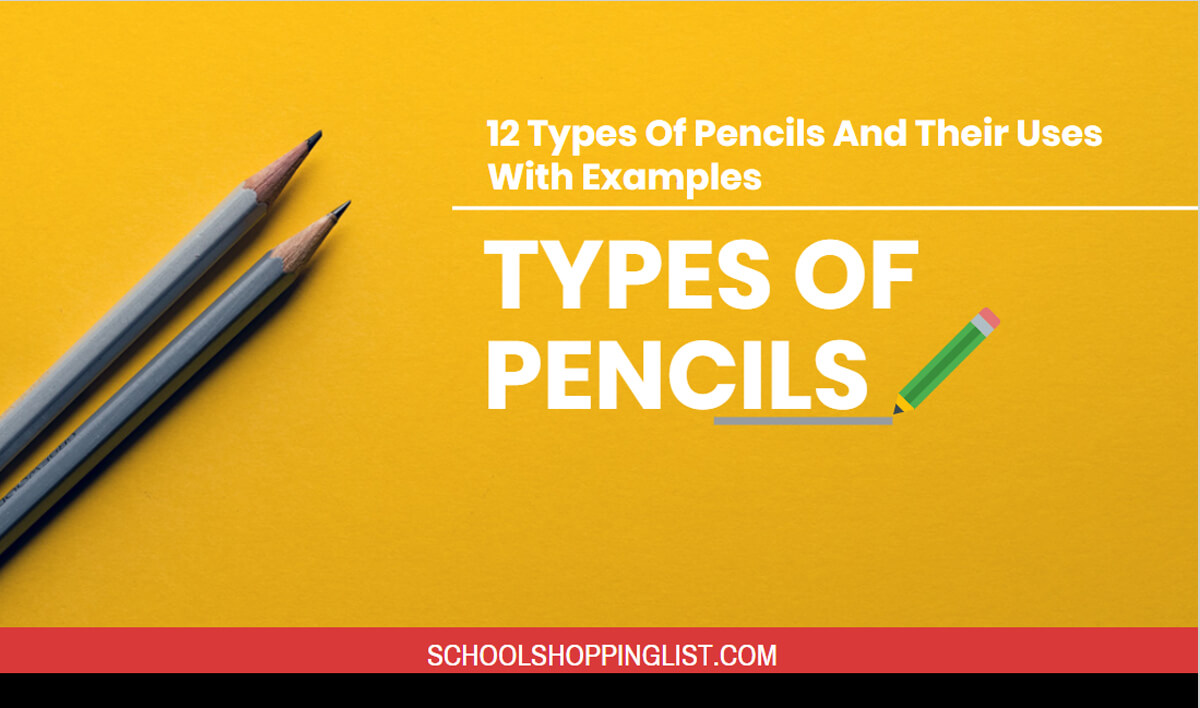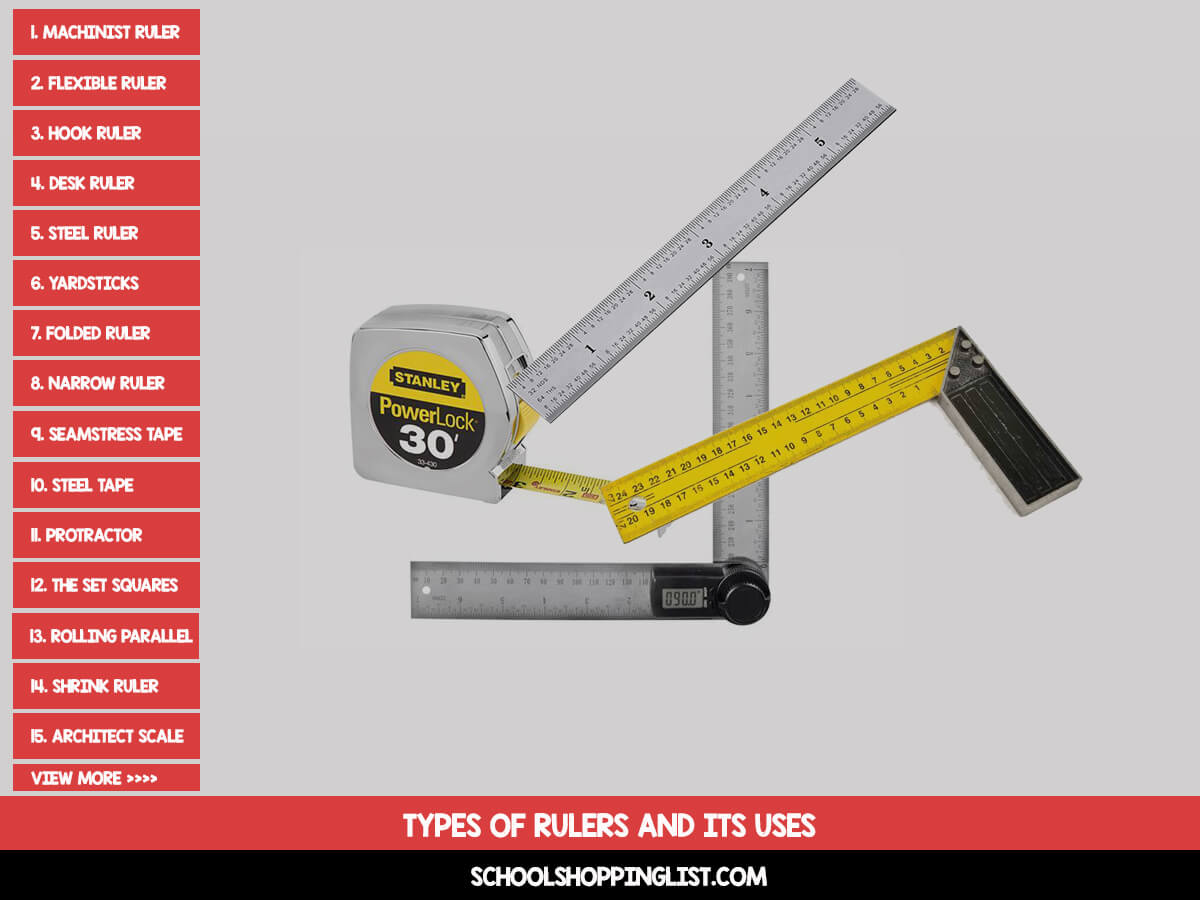Nowadays there are different binding techniques, each of them has its advantages and disadvantages. Therefore, depending on the written material and its purpose, some techniques should be used or others. But, which are these and which aspects should be taken into consideration?
Despite the innovative era that technology brings with it, society still prefers books in physics. Feeling with the fingertips, the passage of the leaves, and controlling the percentage of reading done at a glance, are some of the pleasant experiences that electronic formats have not yet managed to match.
That is why, to this day, the printing and physical binding of books and magazines is still a valid resource. The dilemma arises when it is time to decide on one of the many possible binding techniques. At this point, one must think about the purpose and audience for which the written material is intended.
Thanks to my many years of experience in printing and binding all kinds of written documents. The quality, costs, advantages, and disadvantages vary greatly depending on the interests of the authors. The main requirements to be taken into consideration, before specifying the different parameters to be executed in a printing house, are the estimated binding time, the number of sheets that can be placed, and the binding time.
At present, the most popular binding techniques are:
Overview
18 Types of Book Binding
1. Case Binding or Sewn Binding
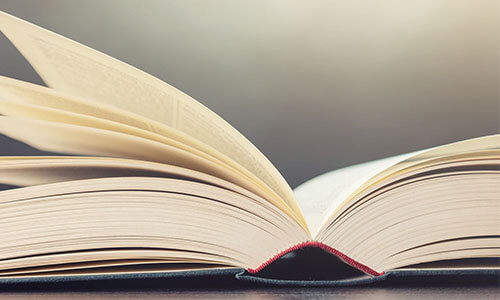
When sewing, the printed sheets are connected with thread. Printed products bound with thread are very durable, but their production is complex, expensive, and, for example, used for very high-quality works. Typical products of this type of binding are books, such as encyclopedias, bibles, art books, fiction literature, and catalogs
When sewing, the printed sheets are first folded. They are then joined and sewn together. This produces the booklet, which is glued to the spine and cut out on three sides. The sewn and glued booklets can have different covers; that is, they are “matched” to each other. Sewing makes it possible to use a variety of different covers (such as hardcover). The rest of the processing depends on the type of cover sheet.
The price ranges from $7 to $12 per book. From 50 units, the cost varies according to the number of books.
Advantages:
- Very stable and durable
- Opens well
- Gives a high-quality appearance
- Many content pages can be worked on without problems
- Many possible variants
Disadvantages:
- Expensive
- It’s not easy to incorporate loose pages
- The folded sheets must consist of four, eight, or sixteen pages
- if there are images that stand out, they tend to be partially lost in the joint
2. Perfect Binding or Glue Binding
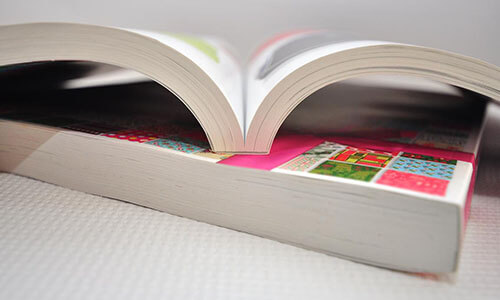
The name of this type of binding gives it away: the pages are glued together to produce a durable print. Gluing is perfect for sales catalogs, magazines, large brochures, paperbacks, brochures, and advertising magazines
In the glued binding process, the sheets are placed one after the other, individually folded (joined). This is how the inside of your print is formed. The spine is milled, sanded, and the paper dust removed so that the glue can penetrate deeply into the paper fibers. Only then is the glue applied with rollers or nozzles to the outside of the spine. The cover is then pressed onto the still fresh glue. Afterward, the cut-out on three sides follows, and now the glued print is ready. In this process, PUR and Hotmelt adhesives are used.
Hotmelt is the economical variant with limited durability, making this type of binding very suitable for simple products with a short shelf life. Binding with PUR adhesives is a little more expensive, but also more durable; therefore it is ideal for more durable and high-quality prints and large quantities of pages.
A minimum spine thickness of a few millimeters is required for glue binding. Therefore, small quantities of low-weight pages are technically difficult to produce. However, individual sheets can be processed on the inside, as well as different types of paper.
Depending on the material and finish, the price can range from $5 to $8 per book, and $1.50 per batch.
Advantages:
- Fast and relatively cheap
- Products are easy to stack
- Very good durability with PUR adhesives
- Supports single sheets and various papers on the inside
- Gives a high-quality appearance
- Various formats and variations possible
Disadvantages:
- Part of the print disappears into the joint
- Limited opening
- The minimum binding thickness depends on the number of pages and the weight
- 72 hours drying time for PUR adhesives
3. Saddle Stitch Binding
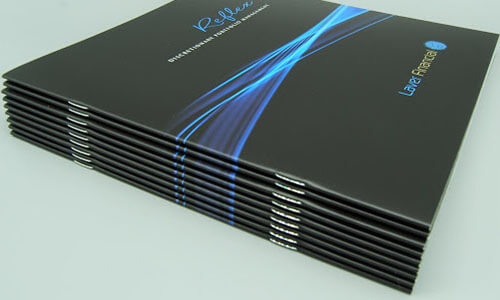
Stapling is a true classic among binding procedures. It is also known by other names, such as stapling, stapled, or hooked binding. This type of binding is particularly common in the following printed products: magazines, printed advertisements of all kinds, brochures, and catalogs
In the stapling process, the sheets that are inserted one into the other are joined at the back of the fold by wire staples; all in one working step. In doing so, in most cases, the wire pierces the fold at two points and is bent on the inside. After the binding process comes the last working step: the trimming on three sides.
A fast and economical production are the advantages of this binding. Also, it stands out for its relatively long durability and the fact that it can be opened well. The printed motifs can be seen right up to the fold (the middle of the print when open).
The pages of stapled prints must always be a multiple of four, therefore individual pages are not possible. The only exception is additional removable pages, also called inserts, on the inside pages or covers.
Stapling with omega staples for easy archiving. The greater the weight of the paper, the fewer the pages. For example, for a magazine, we usually accept up to 40 pages of 250 g/m² coated paper, while 90 g/m² coated paper can hold up to 128 pages. The wire used for stapling is usually available in various coatings and colors. An interesting variant is omega stapling, with outwardly curved eyelets, which simplifies fixing the binding and subsequent filing without the need for perforations.
It costs about $0.05 for a maximum of 100 sheets.
Advantages:
- Fast and cheap
- Durable
- Opens well
- Ecological thanks to the low consumption of materials
- Various formats and variations are possible and the print is well appreciated up to the fold
- If it is with omega staples it is easy to fix and file
Disadvantages:
- A limited number of pages
- Does not give a high-quality appearance
- In the fold, it moves
- Not easy to stack because of the thickening
4. Pamphlet Binding
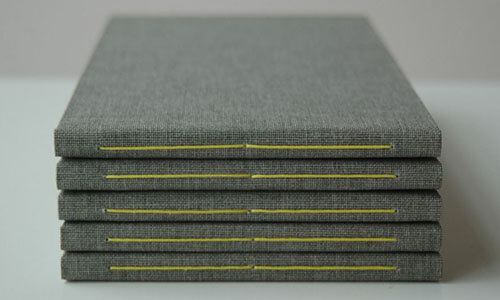
The economical rubberized fold holds simple advertising products that do not need to be circulated for a long time. The number of pages is limited and a cover cannot be included. Typical products with gummed folds are: brochures with a small number of pages, advertising mailings, mailings, inserts, and newspaper supplements
In this type of binding, glue is applied to the planned folding lines. The sheets are then glued together, folded, and cut. Depending on the type of folding, eight-, twelve-, and sixteen-page products can be printed in sheet-fed offset printing. In rotary offset printing, even larger quantities are achieved. The paperweight should be between 80 and a maximum of 135 g/m². In addition to sheetfed printing, this binding technique is also used in rotary offset printing to produce cost-efficient print runs from around 50,000 copies, usually with inline processing (all steps of the manufacturing process take place within the same machine).
Its cost ranges from $0.50 to $1.20 per brochure. And from 50 brochures, the cost is calculated on a unit basis.
Advantages:
- Fast and cheap
- Opens relatively well
- Various formats and roles possible
Disadvantages:
- A low number of pages
- Only for perishable products
- Without cover
- Limited weight selection
- A wide variety of papers is not possible
- Does not give a high-quality appearance
5. Comb Binding (Cerlox or Surelox Binding)
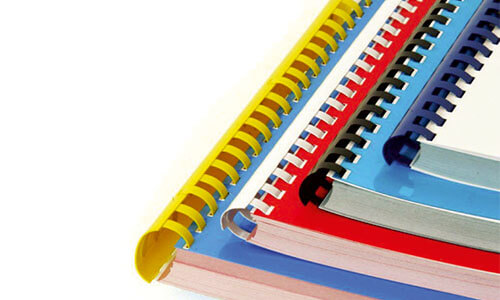
Plastic comb binding is widely used in the arts and is a quick solution for collecting sheets in blocks very economically due to the low cost of consumables. The disadvantages they have from a practical point of view and concerning the metallic spiral systems are diverse, among them that the sheets have a limited turn. Bead binding does not allow for 360-degree angle openings, which prevents the passage of the sheets in a fast and agile manner. When you want to see the material it must be on a surface and with its adjoining pages facing each other.
Another factor to take into account is that for intensive use the sheets suffer more deterioration with the comb binding system than with the spiral since comb binding is not intended for professional use or for runs that do not go beyond a few units. Everything depends on the function of the book, that is why it is one of the most economical binding methods used by students and teachers in guides, practices, pre-projects, etc.
Its price is from 0.30$ depending on the size of the booklet and the number of pages, reaching a maximum of 0.50$ per book approximately.
Advantages:
- It has an economical and easy to use system.
- It can also be unbundled and updated when needed and supports up to 500 sheets.
Disadvantages:
- The leaves cannot be rotated 360 degrees.
- Not for intensive use
- Sheets deteriorate easily
6. Spiral Binding
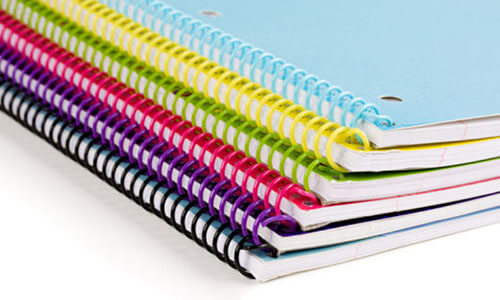
The spiral binding consists of perforating the sheets using a specific technique and with specific machinery. Once the punching is done, the next phase is carried out. In this phase, the spiral is placed through the perforation of the sheets.
Finally, the spiral is closed on itself. In this way, we achieve greater security and ensure that the binding is not damaged when the sheets are turned. Among all the techniques, the spiral binding joins all the ingredients that define a quality work: care in the conservation, presentation, and handling of the bound document. In this way, if what you are looking for is a flexible, simple, economic, and durable product, spiral binding will be a preferential option.
Its cost ranges from $2.00 to $3.00 per unit. And from 50 units of books, the cost is calculated based on the quantity.
Advantages:
- Speed: With the development of technology, the spiral binding industry now has advanced punching machines, which even allow data to be entered such as the number of sheets, the type of ringing, or the shape of the hole. In this way, this machinery makes the holes quickly and automatically and can reach a high rate of execution that will allow, in a few days, to place the ring to a large number of documents.
- Functionality: As pointed out at the beginning, comfort and functionality for the user must be an essential element when assessing the type of binding to be done. In this sense, the spiral binding technique enjoys some characteristics that make it the favorite option. The possibility of having the sheets cover 360 degrees of the circumference, its durability or the fluidity in the passage of the pages stand out as attractive features that make spiral binding the preferred option in many cases.
- Economy: Given the advanced technology in the making of the holes and the placement of the ring, as well as the low price of the materials to be used (plastic or wire), the price range for this kind of service is very low. The investment to be made will not be high in any case and, with the speed and durability of the banding offered in this online binding work, it can be considered that spiral binding is a highly economic process.
Disadvantages:
- Its use is not widespread in books and literary works, this form of binding is used more in notebooks, notebooks, and academic works.
7. Cased-in Wiro Binding
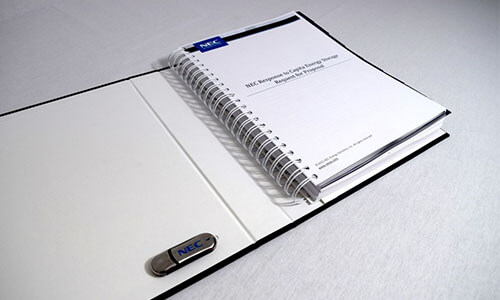
The spiral binding is also called Wire-O, double ring, or curly binding. In this binding technique, a wire or “comb” of wire is inserted through a row of holes that have been previously drilled in the booklet. Spiral binding is versatile and is often used for the following products: calendars, recipe and notebooks, books and text materials, notebooks, sales literature, and magazines
For the spiral binding, a row of holes is punched in the booklet and, if necessary, in the cover. A wire spiral is then turned through the round holes. A modification of the wire ends ensures that the sheets do not fall out.
Open notebook with Wire-O binding. No other binding method allows the bound material to open so perfectly. The pages lie flat and can be flipped through without any problems. The maximum number of pages depends on the diameter of the spirals and the weight of the paper. With a very large spiral diameter and low grammage, several hundred sheets are no problem. A variety of print media and individual sheets can be incorporated into the booklet. The spirals are available in various materials and colors. When opening there is a displacement: the motifs that reach the junction do not close flush.
Their cost ranges from $2.00 to $3.00 per unit. And from 50 units of books, the cost is calculated based on the quantity.
Advantages:
- Durable
- Opens beautifully
- The leaves can be browsed completely
- Allows for large numbers of pages
- Material combinations are not complicated
- It is possible to incorporate individual sheets
Disadvantages:
- The motifs that reach the joint do not close flush (displacement)
- Between the open pages, there is a separation
- Protruding spirals make stacking difficult
- The surface of the pages is reduced by the row of holes
8. Wire-o Binding
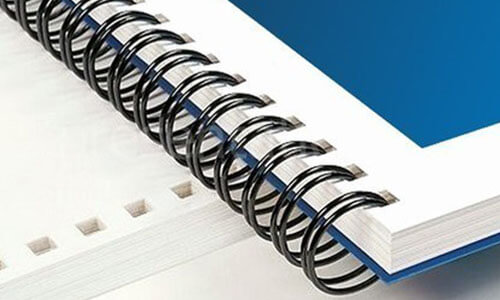
The metal binding spiral is manufactured with a wire thread that is wound on itself forming a geometric figure with a helical shape. It starts at one end, goes around its center, and ends at the opposite end without any interruption of the wire.
To bind the documents, the spiral is inserted, turning it through the perforated sheets. Although it may seem somewhat complicated, it is not at all. As soon as the first coils of the spiral make their way through, the sheets no longer move and from then on it is much easier to insert the worm, which is somewhat laborious.
This type of binding is the best for documents of 16 to 275 pages, its cost varies between $3.00 and $4.00 and is widely used by students, thanks to its low cost.
Advantages:
- It is impossible to lose a sheet, the only way it can happen is by tearing it out.
- Easy to tear out the sheets without damaging the assembly.
- Allows the document to be rotated 360º.
Disadvantages:
- The presentation is not very luxurious.
9. Thermal Binding or Tape Binding
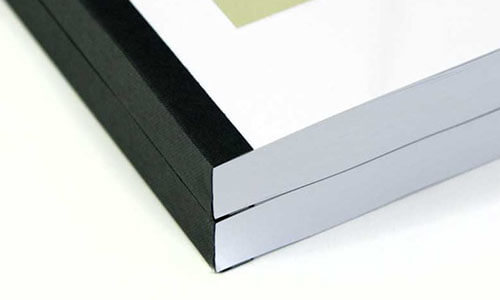
The thermal binding consists of binding the pages of the book or document in question by melting a certain amount of glue.
In this way, the pages are held firmly together and also on the back of the cover. We will now try to investigate further the process that this modern binding technique entails and specify the advantages, characteristics, and most suitable uses.
Its cost ranges from $2.50 to $3.50 per unit. And once you pass the 50 units, the cost varies according to the number of books.
Advantages:
- Thermal binding stands out as one of the fastest and most economical options for binding a book or any type of document with few pages. However, this can vary according to the weight of the paper.
- Likewise, it allows for an open choice between using a rigid or flexible cover, as the designer prefers. Undoubtedly, this versatility is one of the unquestionable attractions of this modern binding technique.
- Finally, two other great advantages of thermal binding are that it is a generally very economical process.
- It offers a very professional look
- It is fast, usually taking about a minute or less
- No need to punch the paper
- It is possible to bind more than one book at the same time
Disadvantages:
- A thermal binder can be a high initial cost
- It is not easy (although it is possible) to add and remove pages
- Pages cannot be opened at a 360-degree angle
10. Coptic Binding or Section-sewn Binding
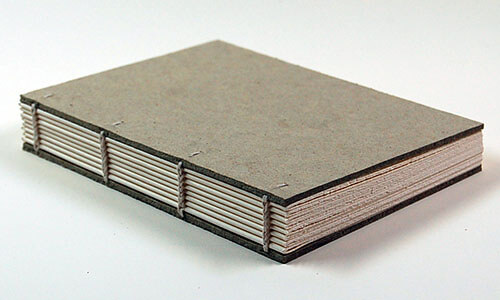
Coptic bookbinding is characterized by the union of the elements using sewing, generally of a chain knot. The elements that are part of this type of binding are
- Set of sheets folded by the center as a blog.
- Generally made of cardboard or wood. Optionally they are lined with fabric or wallpaper.
- Cord or thread. It is introduced through the holes previously made in the covers and the leaf notebooks.
For lovers of handmade or traditional binding, this type of binding is still one of the most attractive thanks to its simple realization. It offers many possibilities, finishes… and can be used for photo albums, scrapbooks, notebooks… Depending on the material and finish its price can range from $5 to $8 per book.
Advantages:
- The flat opening of the book is very comfortable for handwriting or sketching.
- Among the most interesting features is the sewing of loose sheets and therefore the use of various materials such as plastic, acrylic, wood, cardboard, metal, etc.
Disadvantages:
- The union of the covers through holes generated greater wear in the hinges that, besides, had to support the weight of the covers that used to be made of wood.
- Since there was no firm spine containing the entire structure, the body of the booklets tended to curve inward.
11. Japanese Bookbinding
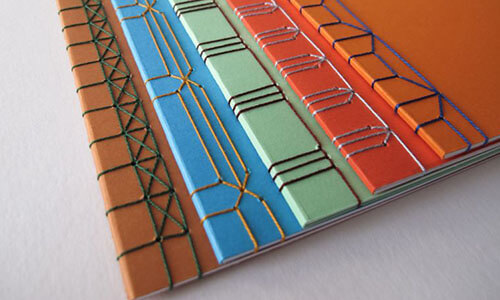
To define a binding, it is best to identify the materials that will be used during the elaboration process. For example, in the case of Japanese binding, the use of thick cardboard covers and back covers is indispensable. And, secondly, that of a needle and a sewing thread.
This type of binding is based on a technique known as “Japanese stitching”. Japanese stitching consists of sewing the pages, cover, and back cover together. Therefore, for the bound object to acquire a minimum consistency, it is necessary to have hard front and back covers and a strong thread.
The use of seams to bind the elements of a book is very common in different types of binding. What makes it so different from Japanese bookbinding is that these seams are not hidden behind the spine. On the contrary, they are visible as an ornamental part that enriches the aesthetics of the binding.
This is the main reason why the thread, besides being resistant, must be thick. Thus, it will stand out as an important element visible on the spine, the front, and the back cover.
Its cost varies between 0.50$ per book.
Advantages:
- The simplicity of this stitching gives us something that most do not because if necessary we could undo it after the notebook is already done and add or remove leaves, the notebook is like new. For artist’s books, this is an advantage since new works are always being added.
- Concerning the materials and space needed to make it, it requires little space and few materials.
Disadvantages:
- This type of notebook does not have booklets and can be less easy to handle, the stitching even subtracts a minimum of space on the sheet, but allows us to give other different uses such as artist books, photo albums, catalog, etc.
12. Metal or Plastic Screw Post
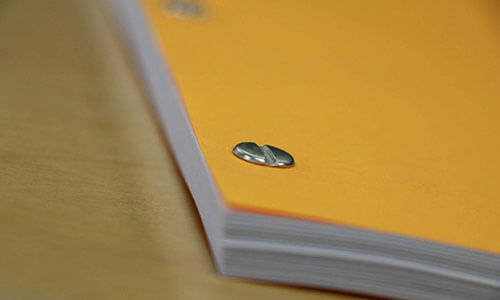
Screw posts, also known as Chicago or bookbinding posts, are extremely versatile folders that allow loose documents of virtually any shape or size to be securely attached. They range in cost from $0.20 to $2.00 per book.
Their two-piece construction allows for easy upgrades, making them an ideal choice for applications that require frequent updates. They are commonly used to link photo albums, scrapbooks, samples, and many other items.
The precision metal and plastic company can perform the following styles: nickel steel, solid brass (lead-free), nickel-brass, or anodized aluminum. All our binding screw posts have a different standard and can also be customized.
Advantages:
- Variable coarse binders are used
- The screws are reusable
- The screws are low cost
- They can be modified frequently without general damage to the content
Disadvantages:
- They do not give a premium finish
- It is uncomfortable to open the book completely on a table
- When done incorrectly, leaves often fall off
13. Screw-post Binding
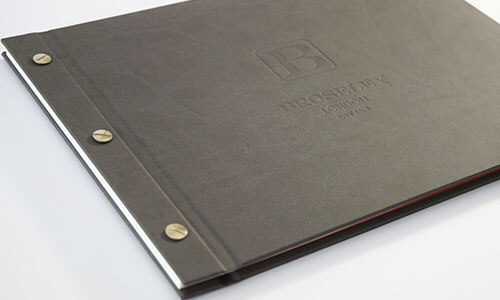
Screw binding is an economical solution for the production of various documents. It is preferably used when creating albums, but it can also be used to make books. It has several unique features that distinguish it from other bindings. To know them is to delve into a world so little known, but useful, as is the world of bindings.
Its cost varies between $1.00 and $2.00 per book.
Advantages:
- The most important advantage of screw binding is that it allows for flexible documents, which can be expanded in the future. The screws have extensions of different sizes that allow this capacity. Besides, it is a type of binding that can be modified, since it is possible to change the order sheets at any time and even place different covers over time.
- As far as applications are concerned, this is the scrapbook binding par excellence. Since a scrapbook is binding like this one, it allows all kinds of changes to be made. Along with this, photo albums are another of the most widespread applications and for similar reasons to the aforementioned format.
Disadvantages:
- They do not give a premium finish
- It is uncomfortable to open the book completely on a table
- When done incorrectly, leaves often fall off
14. Eyelet Binding
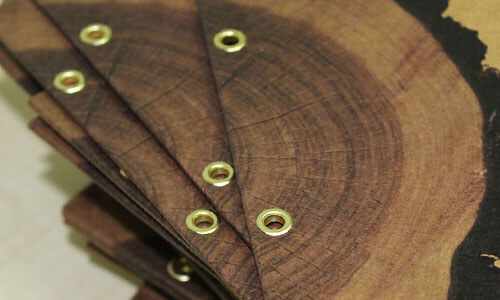
There are buttonholes of different colors, dimensions, and thicknesses. Buttonhole-bound books are permanently bound; the sheets cannot be added or removed. Buttonholes come in a wide range of colors. The most common colors by a wide margin are copper, silver, white, and black. Other colors may sometimes require a longer lead time.
The cost ranges from $8.00 to $15.00 per book. From 50 units, the cost varies according to the number of books.
Advantages:
- Very durable
- Unusual, distinctive, and memorable
- The colors of the buttonholes can be coordinated with the printed copy
- Permanent
- Sometimes you can insert booklets with eyelets into ring binders
Disadvantages:
- Eyelet-bound books are more expensive than flat-seam or spine-bound styles and perfect binding
- The maximum thickness is 3/8 “.
- Certain diameters, thicknesses, and colors are always readily available
15. Velo Binding
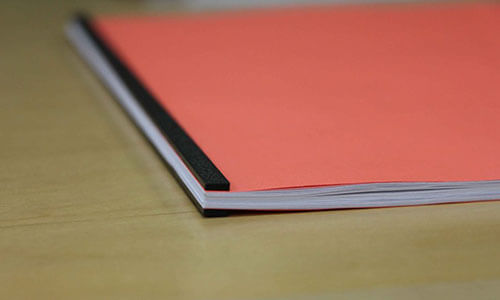
It is a type of bookbinding often offered in photocopy stores and printers. Veil binding consists of a series of holes in the edge of the book. A plastic strip with rigid spikes is inserted into the holes from the top of the book, and a strip with corresponding holes is placed on the back with the spikes sticking out.
The book is then placed in a machine that holds the book firmly while the excess length of the tines is cut off and the tines are fused to seal the binding. The term “Vil Bind” is a trademark of General Binding Corporation, but is commonly used generically to refer to this process, although strip binding is also sometimes used.
It costs between 1.00 and 2.00 per book. From 50 units upwards, the cost varies according to the number of books.
Advantages:
- Veil binding is designed to be permanent.
- Economical for ultra-low quantities, but has a perfect binding feel.
- Ideal for high volume projects. Can bind books up to 250 pages
- It is feasible to use different articles within the same book.
- Great longevity
Disadvantages:
- The union is rigid due to the lateral union.
- Not compatible with thick papers inside the book.
- The “Cross Overs” are not ideal. Cross Overs are images/text that go from the page of the book to the right page.
- It is not flat at all.
- No minimum thickness. The maximum thickness is 2 inches.
- The plastic edge is not ideal for a premium finish.
16. Board Book Binding
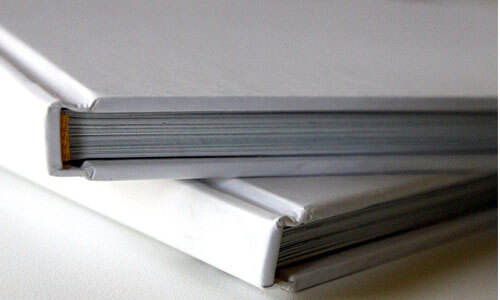
Cardboard binding, also known as hardcover binding, is a type of binding in which the book is lined with a rigid cardboard cover. This is its main difference from a sewn paperback: the hardness of its cover.
This cardboard is covered with a paper, fabric, or Graflex cover. The title and design of the cover are printed on this lining if the paper is used, or it is decorated with gold or silver engravings if fabric or Graflex is used.
Its cost varies between $15.00 and $20.00 per unit. From 50 units, the cost varies according to the number of books.
Advantages:
- It is the strongest and most durable type of binding
- The cover is not only a thicker paper but it is also made of various elements: rigid cardboard, lining, and guards
Disadvantage:
- The cardboard has a high cost for its manufacture and its covers
- The production time is slightly longer than expected.
17. 3-hole Punch Binding
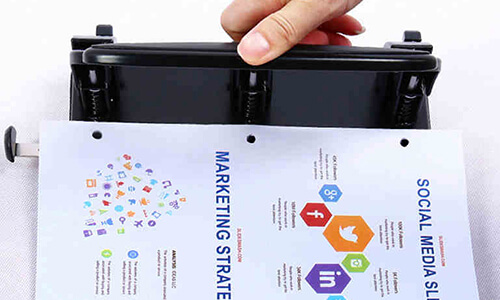
Push down on the punching arm to make three equal holes in the pages. For a book with many pages, you may only need to punch 10 pages at a time to avoid jamming the punch.
Pass the ribbon through the bottom hole at the front of the book, pulling the ribbon out from the back. Replace the ribbon in the center hole at the back of the book and pull it toward the front of the book. Tie the two ends of the ribbon into a loop.
Then take the quote and pass it over the top of the book, bringing the quote to the back. Again, pass the ribbon through the middle hole at the back of the book, pulling it toward the front of the book. Tie the two ends of the ribbon into a loop. Cut off the ends of the excess tape. Brush a coat of seam sealant to prevent the tape from fraying. Find seam sealant at any fabric and craft store.
It costs quite a bit, ranging from $0.80 to $1.20 per unit of the book.
Advantages:
- Binding your book with thread is a fairly simple process that does not require many tools.
Disadvantages:
- Choosing the tape you want to bind with, make sure it is strong and soft. Thick and very stiff tapes can cause damage to the pages.
18. Otabind Book Binding (Layflat Book Binding)
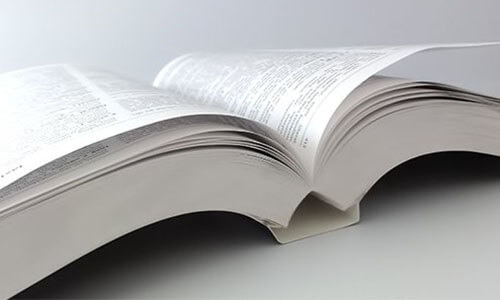
The purpose of this is that the text block is not pasted directly onto the cover page, as it is in the examples above. A small amount of cold glue is applied to the text block and left to dry overnight. The pocket cover is attached to the final pages, and the scores allow the text block to be separated from the cover.
The cost varies from $8 to $13 per book. From 50 units, the cost varies according to the number of books.
Advantages:
- The cold glue ensures that the pages are very difficult to loosen.
- The spine, because it is not attached to the text block, never wrinkles or breaks.
- Pages always lie flat; there is never a loss of margin.
Disadvantage:
- Careful consideration must be given to determining stock and designs when designing flat books.
Final Thoughts
If you are just starting in the bookbinding world, and you don’t know which of the 18 types would be ideal for YOU. I recommend you, based on this article, not to make a hasty decision… take your time.
You must choose the type of binding that best suits the needs of your project, but how do you know that? Making a brief study, where you will analyze first, the following criteria with their corresponding expressions: cost, durability, number of pages, how it opens, and value/aesthetics of your project.
But this is not all, there are other criteria that in my opinion are secondary, but necessary to make a correct decision of binding, such as stackability, variety of papers, binding, that it is possible to remove individual sheets, and that it is possible to work individual sheets.
Once you have decided on the most important factors for you, here you can deduce the most suitable types of binding. When selecting them you should define the product requirements as precisely as possible, to achieve the desired result.

